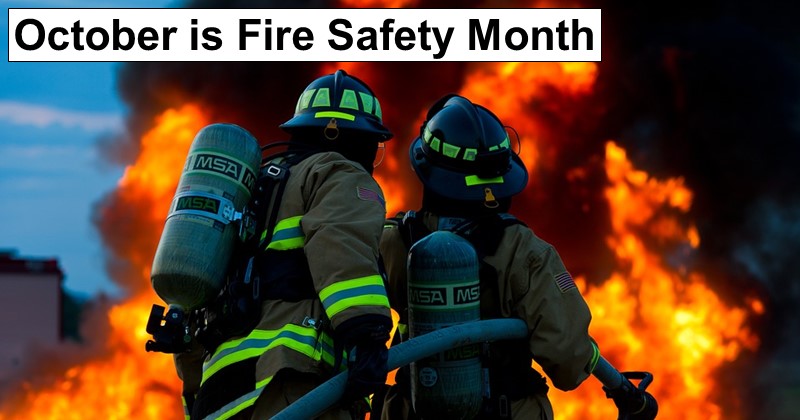I received an email the other day stating that “it’s fire safety month,” which immediately made me laugh just a bit. The way we designate a month as the time to be concerned about something boggles my mind, as if the other eleven months we can ignore [fill in the blank] concern. In any case, it certainly can’t hurt to consider our fire safety now, especially with the cold winter months looming.
There are certainly plenty of checklists and references out there regarding fire safety, which is a good thing, I have my own references listed here, but I want to point out a handful, in particular, that I feel are most relevant to your overall safety.
Fire Safety Plan Checklist – It covers the basics that I hope everyone knows by now, especially reiterating how crucial smoke alarms are, and I couldn’t agree more. Please, if there’s anything you take away from this, it’s that you really need to ensure all of your smoke alarms work properly and that you have them installed in every bedroom, the kitchen, each floor of your home, and the garage, to name the major areas of concern. Honestly, it’s difficult to have too many since they really do save lives.
Leading Causes of House Fires – Next, you really should understand what the biggest threats are. Unfortunately, it’s you! Yes, when cooking in the kitchen–and leaving it unattended–accounts for about half of home fires. The other major takeaway is that you really do need appropriate ABC-style fire extinguishers in your home–especially the kitchen, garage, and your bedroom–and that they’re relatively new; look for them locally as they’re often less expensive than purchasing online. Regrettably, sometimes extinguishers can read green (or good) yet not be functional when used, which is why they should be replaced at least every ten years, though I would suggest more often just to be sure.
Carbon Monoxide Prevention – CO poisoning is another big concern that sometimes gets overlooked. Remember that carbon monoxide is a clear, odorless gas which means you need an appropriate CO detector to spot it. According to the website, “Defective furnaces, fireplaces, flues, and oil heaters are most frequently responsible” for CO buildup, which means you should have these appliances inspected by people who know what they’re doing yearly. Of course, “space heaters, ovens, portable generators, and other gasoline-powered engines can cause a buildup of carbon monoxide” which means you need to be careful when using these as well.
Chimney Fire Facts – Wintertime often means warm fires around the fireplace, cocoa, and family fun. But it can also mean deadly chimney fires if you’ve been neglectful. If you don’t know what to look for, please have your chimney inspected yearly to ensure it’s functioning properly and working correctly.
Fire Safety for Older Adults [PDF File] – I’ll be honest, I’m getting older and slower and that adds up to being less responsive to disasters in which time is of the essence. Seconds count when it comes to extinguishing or evacuating from a home fire, which means the elderly are at a serious disadvantage. Although the aforementioned reference is aimed at older folks, there’s no harm in all of us reading it as there’s plenty of good info contained within, including plenty of cooking tips, home heating tips, electrical safety, and more. There’s easy to reference bullet points and infographics that make the guide a no-brainer to follow.
Again, I include plenty more references here under the “fire safety” heading, but the above five are the major ones to consider.
Remember that fire safety, much like disaster preparedness, isn’t something that can be done AFTER it happens. You really do need to take action now. Stay safe!

Leave a Reply